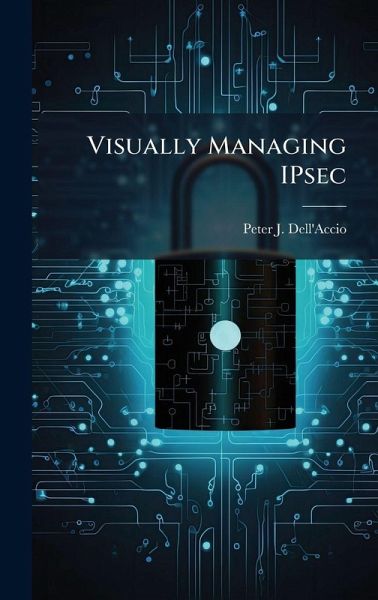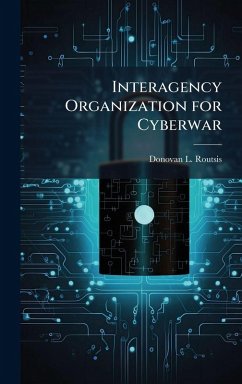
Visually Managing IPsec
Versandkostenfrei!
Versandfertig in über 4 Wochen
28,99 €
inkl. MwSt.
Weitere Ausgaben:

PAYBACK Punkte
14 °P sammeln!
The United States Air Force relies heavily on computer networks to transmit vast amounts of information throughout its organizations and with agencies throughout the Department of Defense. The data take many forms, utilize different protocols, and originate from various platforms and applications. It is not practical to apply security measures specific to individual applications, platforms, and protocols. Internet Protocol Security (IPsec) is a set of protocols designed to secure data traveling over IP networks, including the Internet. By applying security at the network layer of communication...
The United States Air Force relies heavily on computer networks to transmit vast amounts of information throughout its organizations and with agencies throughout the Department of Defense. The data take many forms, utilize different protocols, and originate from various platforms and applications. It is not practical to apply security measures specific to individual applications, platforms, and protocols. Internet Protocol Security (IPsec) is a set of protocols designed to secure data traveling over IP networks, including the Internet. By applying security at the network layer of communications, data packets can be secured regardless of what application generated the data or which protocol is used to transport it. However, the complexity of managing IPsec on a production network, particularly using the basic command-line tools available today, is the limiting factor to widespread deployment. This thesis explores several visualizations of IPsec data, evaluates the viability of using visualization to represent and manage IPsec, and proposes an interface for a visual IPsec management application to simplify IPsec management and make this powerful security option more accessible to the information warfighter. This work has been selected by scholars as being culturally important, and is part of the knowledge base of civilization as we know it. This work was reproduced from the original artifact, and remains as true to the original work as possible. Therefore, you will see the original copyright references, library stamps (as most of these works have been housed in our most important libraries around the world), and other notations in the work. This work is in the public domain in the United States of America, and possibly other nations. Within the United States, you may freely copy and distribute this work, as no entity (individual or corporate) has a copyright on the body of the work. As a reproduction of a historical artifact, this work may contain missing or blurred pages, poor pictures, errant marks, etc. Scholars believe, and we concur, that this work is important enough to be preserved, reproduced, and made generally available to the public. We appreciate your support of the preservation process, and thank you for being an important part of keeping this knowledge alive and relevant.












